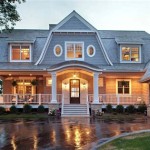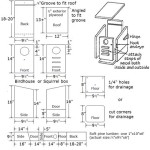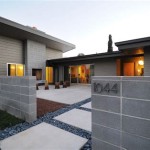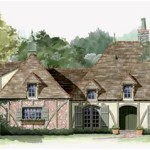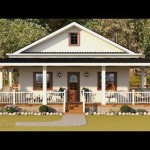Brownstone house plans are detailed blueprints that guide the construction and design of brownstone houses, a type of townhouse known for its distinctive brownstone facade. These plans are essential for ensuring the structural integrity, aesthetic appeal, and functionality of the house.
In the United States, brownstone houses are primarily associated with the Victorian era and can be found in many historic districts. These houses are characterized by their narrow width, high ceilings, and ornate detailing. Brownstone house plans typically include specifications for the number of stories, the layout of the rooms, the placement of windows and doors, and the materials to be used in construction.
In the next section, we will explore the various elements that make up brownstone house plans, including the different types of brownstone available, the architectural styles that are commonly associated with brownstone houses, and the importance of working with an experienced architect and contractor to ensure the successful completion of your brownstone house project.
When drafting brownstone house plans, there are several key points to consider:
- Architectural style: Victorian, Romanesque, Gothic Revival
- Brownstone color: Red, brown, gray
- Number of stories: Typically 3-5
- Facade details: Cornices, quoins, lintels
- Interior layout: Parlor floor, dining room, kitchen
- Window and door placement: Symmetry, proportion
- Materials: Brownstone, brick, wood
- Sustainability: Energy efficiency, water conservation
Consulting with an experienced architect and contractor is crucial to ensure that your brownstone house plan meets your specific needs and adheres to building codes.
Architectural style: Victorian, Romanesque, Gothic Revival
The architectural style of a brownstone house plan is an important consideration, as it will determine the overall look and feel of the house. Some of the most popular architectural styles for brownstone houses include:
- Victorian: Victorian brownstone houses are characterized by their ornate detailing, including gingerbread trim, bay windows, and elaborate porches. They were built during the Victorian era, which lasted from the 1830s to the 1900s.
- Romanesque: Romanesque brownstone houses are characterized by their rounded arches, heavy stonework, and rusticated columns. They were built during the Romanesque Revival period, which lasted from the 1850s to the 1890s.
- Gothic Revival: Gothic Revival brownstone houses are characterized by their pointed arches, ribbed vaults, and stained glass windows. They were built during the Gothic Revival period, which lasted from the 1830s to the 1880s.
- Neo-Grec: Neo-Grec brownstone houses are characterized by their flat roofs, geometric shapes, and decorative moldings. They were built during the Neo-Grec period, which lasted from the 1870s to the 1890s.
When choosing an architectural style for your brownstone house plan, it is important to consider the overall style of your neighborhood, as well as your personal preferences.
Brownstone color: Red, brown, gray
The color of the brownstone is another important consideration when drafting brownstone house plans. Brownstone is a type of sandstone that is quarried in the northeastern United States. It is available in a variety of colors, including red, brown, and gray.
- Red brownstone: Red brownstone is the most common type of brownstone. It is a deep red color with a warm, inviting tone. Red brownstone is often used for the facades of brownstone houses, as it is both durable and aesthetically pleasing.
- Brown brownstone: Brown brownstone is a medium brown color with a slightly cooler tone than red brownstone. It is often used for the trim and detailing of brownstone houses, as it provides a nice contrast to the red brownstone facade.
- Gray brownstone: Gray brownstone is a light gray color with a cool, sophisticated tone. It is often used for the steps and stoops of brownstone houses, as it is very durable and easy to maintain.
When choosing the color of the brownstone for your house plan, it is important to consider the overall style of the house, as well as your personal preferences.
Number of stories: Typically 3-5
The number of stories in a brownstone house is typically between three and five. This is because brownstone houses are typically built on narrow lots, and the height of the house is limited by the amount of sunlight that can reach the lower floors. However, there are some brownstone houses that have as many as six or seven stories.
The number of stories in a brownstone house will affect the overall layout of the house. A three-story brownstone house will typically have a parlor floor, a dining room, and a kitchen on the first floor; a living room, a library, and a guest bedroom on the second floor; and a master bedroom, two additional bedrooms, and a bathroom on the third floor. A four-story brownstone house will typically have the same layout as a three-story brownstone house, but with an additional bedroom or bathroom on the fourth floor. A five-story brownstone house will typically have the same layout as a four-story brownstone house, but with an additional bedroom or bathroom on the fifth floor.
When choosing the number of stories for your brownstone house plan, it is important to consider your needs and lifestyle. If you need a lot of space, then a four- or five-story brownstone house may be a good option for you. However, if you do not need as much space, then a three-story brownstone house may be a better choice.
No matter how many stories you choose, a brownstone house is a beautiful and timeless home that will provide you with years of enjoyment.
Facade details: Cornices, quoins, lintels
Cornices
Cornices are decorative moldings that run along the top of a building’s facade. They can be simple or elaborate, and they often feature dentils, modillions, and other decorative elements. Cornices help to define the overall shape of a building and to add visual interest to the facade.
Quoins
Quoins are blocks of stone or brick that are used to reinforce the corners of a building. They can be rusticated, meaning that they have a rough-hewn surface, or they can be smooth and polished. Quoins help to protect the corners of a building from damage and they can also add visual interest to the facade.
Lintels
Lintels are horizontal beams that are placed above windows and doors to support the weight of the wall above. They can be made of stone, wood, or metal, and they can be plain or decorative. Lintels help to prevent the walls of a building from collapsing and they can also add visual interest to the facade.
Cornices, quoins, and lintels are all important elements of brownstone house plans. They help to define the overall shape of the building, to protect the building from damage, and to add visual interest to the facade.
Interior layout: Parlor floor, dining room, kitchen
The interior layout of a brownstone house is typically organized around a central hallway that runs from the front to the back of the house. On the parlor floor, the hallway leads to a large, formal living room, or parlor, on one side and a dining room on the other side. The kitchen is typically located in the back of the house, off the dining room.
- Parlor floor: The parlor floor is the most important floor in a brownstone house. It is where guests are entertained and where the family gathers for special occasions. The parlor floor typically has high ceilings, large windows, and elaborate moldings and other decorative details.
- Dining room: The dining room is located next to the parlor on the parlor floor. It is used for formal dining and entertaining. The dining room typically has a large table, a sideboard, and a china cabinet.
- Kitchen: The kitchen is located in the back of the house, off the dining room. It is used for cooking and preparing meals. The kitchen typically has a stove, an oven, a refrigerator, and a sink.
The interior layout of a brownstone house is designed to be both functional and stylish. The central hallway provides a convenient way to move from room to room, and the large windows and high ceilings make the rooms feel spacious and airy. The elaborate moldings and other decorative details add a touch of elegance to the house.
Window and door placement: Symmetry, proportion
Symmetry
Symmetry is an important principle of design that can be used to create a sense of balance and harmony in a building. In brownstone house plans, symmetry is often used in the placement of windows and doors. For example, a brownstone house may have a symmetrical facade with a central doorway flanked by two windows on each side. This type of symmetry creates a sense of order and stability.
Proportion
Proportion is another important principle of design that can be used to create a visually pleasing building. In brownstone house plans, proportion is often used in the relationship between the size of the windows and doors and the size of the overall facade. For example, a brownstone house may have tall, narrow windows that are in proportion to the height of the facade. This type of proportion creates a sense of elegance and sophistication.
The golden ratio
The golden ratio is a mathematical ratio that is often used in art and architecture to create a sense of beauty and harmony. The golden ratio is approximately 1.618:1. In brownstone house plans, the golden ratio can be used in the proportion of the windows and doors, the height of the facade, and the overall shape of the house. For example, a brownstone house may have a facade that is divided into two sections by a horizontal line in the golden ratio. This type of proportion creates a sense of visual interest and balance.
Conclusion
Window and door placement are important considerations in brownstone house plans. By using symmetry, proportion, and the golden ratio, architects can create brownstone houses that are both beautiful and functional.
Materials: Brownstone, brick, wood
Paragraph before list
Brownstone houses are typically constructed using a combination of materials, including brownstone, brick, and wood. Brownstone is a type of sandstone that is quarried in the northeastern United States. It is a durable and attractive material that is often used for the facade of brownstone houses. Brick is another common material used in the construction of brownstone houses. It is a strong and fire-resistant material that is often used for the walls of brownstone houses. Wood is also a common material used in the construction of brownstone houses. It is used for the framing of the house, as well as for the floors, doors, and windows.
List
- Brownstone: Brownstone is a type of sandstone that is quarried in the northeastern United States. It is a durable and attractive material that is often used for the facade of brownstone houses. Brownstone is a relatively soft stone, so it is important to protect it from damage. This can be done by applying a sealant to the stone or by painting it.
- Brick: Brick is another common material used in the construction of brownstone houses. It is a strong and fire-resistant material that is often used for the walls of brownstone houses. Bricks are made from clay that is fired in a kiln. Bricks are available in a variety of colors and textures, so they can be used to create a variety of different looks.
- Wood: Wood is also a common material used in the construction of brownstone houses. It is used for the framing of the house, as well as for the floors, doors, and windows. Wood is a strong and versatile material that is relatively easy to work with. However, wood is also susceptible to rot and decay, so it is important to protect it from moisture.
- Other materials: In addition to brownstone, brick, and wood, other materials may also be used in the construction of brownstone houses. These materials may include stone, metal, and glass. Stone can be used for the facade of the house, or it can be used for the steps, window sills, and other architectural details. Metal can be used for the roof, the gutters, and the downspouts. Glass can be used for the windows and the doors.
Paragraph after list
The choice of materials used in the construction of a brownstone house will depend on a number of factors, including the budget, the desired style of the house, and the local climate. Brownstone houses are typically built to last for centuries, so it is important to choose materials that are durable and weather-resistant. By choosing the right materials, you can ensure that your brownstone house will be a beautiful and lasting home for your family.
Sustainability: Energy efficiency, water conservation
Paragraph before list
Sustainability is an important consideration in the design and construction of brownstone house plans. Brownstone houses are typically built to last for centuries, so it is important to choose materials and systems that are energy-efficient and water-conserving. This will help to reduce the environmental impact of the house and lower the cost of ownership.
List
- Energy efficiency: Energy-efficient brownstone houses use less energy to heat and cool, which can save you money on your energy bills. There are a number of ways to make a brownstone house more energy-efficient, including:
– Insulating the walls, roof, and windows
– Installing energy-efficient appliances and lighting
– Using renewable energy sources, such as solar panels or geothermal heating - Water conservation: Water-conserving brownstone houses use less water, which can help to protect the environment and save you money on your water bills. There are a number of ways to make a brownstone house more water-conserving, including:
– Installing low-flow toilets and faucets
– Using rainwater harvesting systems
– Planting drought-tolerant landscaping - Green building materials: Green building materials are made from recycled or sustainable materials, and they have a lower environmental impact than traditional building materials. There are a number of green building materials that can be used in the construction of brownstone houses, including:
– Recycled steel and aluminum
– FSC-certified wood
– Low-VOC paints and finishes - Sustainable site design: Sustainable site design takes into account the natural features of the building site, and it uses these features to reduce the environmental impact of the house. For example, a brownstone house that is built on a sloped site can use gravity to drain rainwater away from the house, which can help to prevent flooding and erosion.
Paragraph after list
By incorporating sustainability into brownstone house plans, you can create a home that is both beautiful and environmentally friendly. Sustainable brownstone houses are more energy-efficient and water-conserving, which can save you money on your utility bills. They are also built using green building materials and sustainable site design, which can help to protect the environment.










Related Posts

